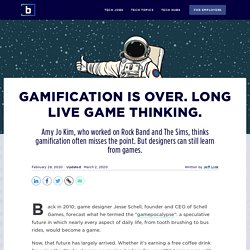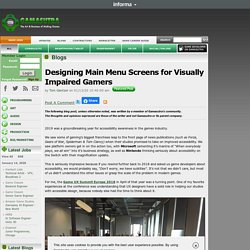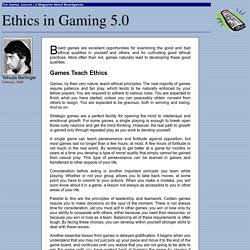

How gamification is increasing productivity during COVID-19. Have you collected reward points at a store to be a gold member?

Or, have you completed your profile on a website because you wanted the progress bar to reach 100 per cent? Brands ‘gamify’ in this manner to motivate you for completing tasks. And what is this gamification thing? The human body releases a chemical called dopamine upon experiencing satisfaction or pleasure. “Gamification” is leveraging the human need of wanting to compete and facilitating the release of dopamine to increase engagement, participation, and loyalty. An awesome benefit of gamification is that it can help you get more work done. How can you use gamification during the current COVID-19 crisis? The 3 indispensable elements of successful Gamification. In the above scenario, the Travel Consultants working at travel agencies in India are mostly young people between 19–26 years old, with low barriers to entry, not all candidates are with degrees in travel and tourism or passionate travelers.

With no standard scale for their salaries(usually low), they are motivated by sales incentives, material gifts, and career certificates. Considering the players are progressing through new virtual and reactive circumstances within the game, the response we design to their actions needs to follow a consistent pattern of language. Gamification Is Over. Long Live Game Thinking. Back in 2010, game designer Jesse Schell, founder and CEO of Schell Games, forecast what he termed the “gamepocalypse”: a speculative future in which nearly every aspect of daily life, from tooth brushing to bus rides, would become a game.

Now, that future has largely arrived. Whether it’s earning a free coffee drink for using the Starbucks app or scoring badges for your 10K tempo runs with Strava, gamification is embraced by consumers as a way to earn discounts and track progress toward goals — and by startups and multimillion-dollar firms as a way to engage and retain users. Tom Gantzer's Blog - Designing Main Menu Screens for Visually Impaired Gamers. 2019 was a groundbreaking year for accessibility awareness in the games industry.

We saw some of gaming’s biggest franchises leap to the front page of news publications (such as Forza, Gears of War, Spiderman & Tom Clancy) when their studios promised to take on improved accessibility. We saw platform owners get in on the action too, with Microsoft cementing it’s mantra of “When everybody plays, we all win” into it’s business strategy, as well as Nintendo thinking seriously about accessibility on the Switch with their magnification update.
Got Game? But First, Make Sure You Know the Players. Are you intrigued with the idea of adding game aspects to your training, but don’t know where to start?

Are you using game-based learning, but want to expand your current methods? As with other learning modalities, you need—first and foremost—to understand your learners. “Never begin the design process with content. “Urban serious games and digital technology” Des DOI sont automatiquement ajoutés aux références par Bilbo, l'outil d'annotation bibliographique d'OpenEdition.Les utilisateurs des institutions qui sont abonnées à un des programmes freemium d'OpenEdition peuvent télécharger les références bibliographiques pour lequelles Bilbo a trouvé un DOI.

Le service d'export bibliographique est disponible aux institutions qui ont souscrit à un des programmes freemium d'OpenEdition.Si vous souhaitez que votre institution souscrive à l'un des programmes freemium d'OpenEdition et bénéficie de ses services, écrivez à : contact@openedition.org Abt Clark, 1970. Serious Games, Viking Press, New York. Alvarez et Djaouti, 2010. Introduction au Serious Game, Questions théoriques, 256 p.
Cools Mario, 2014. « Le “serious game” peut-il être un outil utile au développement du territoire ? On Meaningful Play: Design- GameCareerGuide.com. [In this series of articles, Mars Ashton does a deep dive into a number of topics related to submitted papers, talks and games found at this year's Meaningful Play Conference at Michigan State University.

For this article, Mars discusses the role Design Thinking has as a universal go-to for making good games that aligns (eerily) with common modern game development methodologies proposed by academics, industry vets and popular YouTube content creators.] Game Development is a relatively young industry if you were to consider industries that involve similar practices and methodologies. While it can be difficult at first glance to compare making games and making a building via Architectural practice, there are a number of similarities that drive the two towards finding solutions to the problems that are presented by the very process of making in general. Image via: interaction-design.org This is not a new concept. Choose Your Adventure: Gamification for Learning. Gamification has been among the top trends for learning and development in the last couple of years.

It is often advertised as the magic pill to turn your dry content into juicy engagement. However, starting with gamification may often feel like a “choose your adventure,” and most people end up with the same route: points, badges, and leaderboards. 7 Steps to an Effective Gamification Implementation. Premium Content: This article is part of Links Plus, a premium ATD subscription.

Whether you are preparing to launch your first serious game or just looking to make your next initiative more successful, Sharon and Steven Boller offer these tips for a successful implementation. Sharon Boller Sharon Boller is president and chief product officer of Bottom-Line Performance, Inc. Serious games, studies and tools. Ethics in Gaming 5.0. Board games are excellent opportunities for examining the good and bad ethical qualities in yourself and others, and for cultivating good ethical practices.

More often than not, games naturally lead to developing these good qualities. Games Teach Ethics Games, by their very nature, teach ethical principles. The vast majority of games require patience and fair play, which tends to be naturally enforced by your fellow players. You are required to adhere to various rules. Game design concepts applied to business: Technology forecast: PwC. The game-based redesign of mainstream business Gaming companies have plumbed the depths of motivation for decades. Andrzej Marczewski's Blog - What’s the difference between Gamification and Serious Games? The following blog post, unless otherwise noted, was written by a member of Gamasutra’s community.
The thoughts and opinions expressed are those of the writer and not Gamasutra or its parent company. Anyone who has read my blogs will know that I am a little against the constant arguments about what gamification is and what it isn’t, so this may seem a little hypocritical. Here I am defining it after all. The Little-Known Surprise That Improves Learning in Serious Games. Tags: code red triage, erik van der spek, improve learning, surprise Erik Van der Spek conducted a study which was published within the British Journal of Educational Technology. Van der Spek and his peers at the University of Utrecht used a model of the game Half Life 2 to develop a training scenario.
Results From Game Design Challenge: Let's Get Serious. Ten reasons why game based learning works in education. Boom Culture. The Power of Creativity: How Game Design Changes the Way We Think - Brian Waniewski - Life. Game designers, who must capture and retain players' attention and interest quickly, need to understand human psychology and culture. Instructional Game Considerations. CSU Resources Here are some resources you may find helpful from the workshop. When you are in the classroom or teaching online, you may want to find new and interesting ways to engage students.
Here is a course titled How to Increase Learner Engagement which provides ten great ideas for breaking away from the lecture and working toward engaging […]
Serious Games. Networked Learning Design - Make learners drive your design. The learning problems that designers need to tackle are becoming more complex. As this happens, it is more important than ever for designers to get to the root of learning needs; to deeply understand the learners, their environment and what needs to change. And this focus on learner needs should be sustained throughout the learning design process, not just during an initial analysis phase.
However, learning designers face a number of obstacles in getting to the root of learning needs, not least current practice. It is common for learning designers either to over-analyse, using traditional training needs analysis methods, or largely ignore learner needs, relying instead on clients and subject matter experts. Discussion It is common practice in the e-learning industry to either carry out over-complex training needs analyses, or largely ignore learner needs. In less traditional environments, the opposite problem exists. Recommendations. Networked Learning Design - Debate with your design. Problem summary Good design is like a debate in which the designer “converses” with the thing they are designing. They try out ideas, see what works, shift positions and try new things, often in a fluid, messy, semi-conscious way. As it is this conversation that creates the value, any “efficient” processes that minimises conversation removes value.
Networked Learning Design - Occasional rants - Why serious games work - an over-simplified view. Networked Learning Design - Understand the constraints. Problem summary. Networked Learning Design - Find out what people like. Problem summary. Networked Learning Design - Understand the context. Problem summary Learning needs arise in specific contexts. So to truly understand a learning need, a learning designer needs to gain a deep understanding of the context in which the need arises. Discussion. Jane McGonigal: Gaming can make a better world. Aiming for “Transfer” with Educational Games: the wrong question.